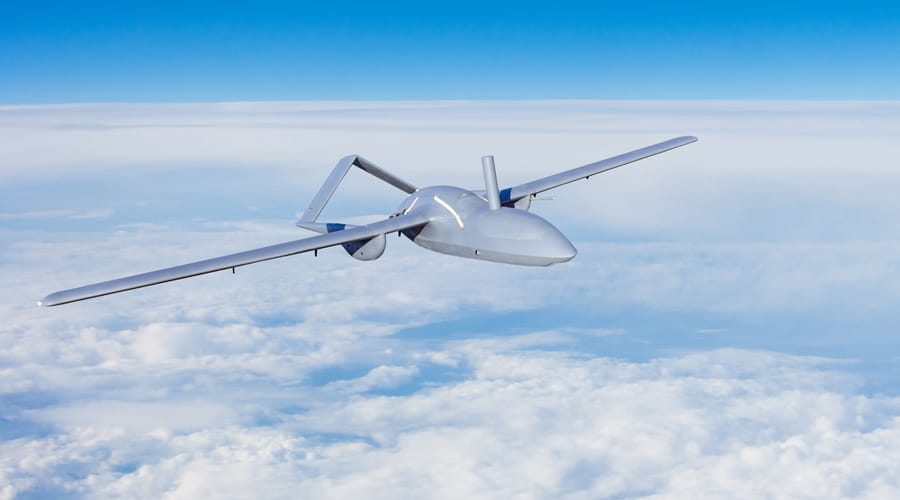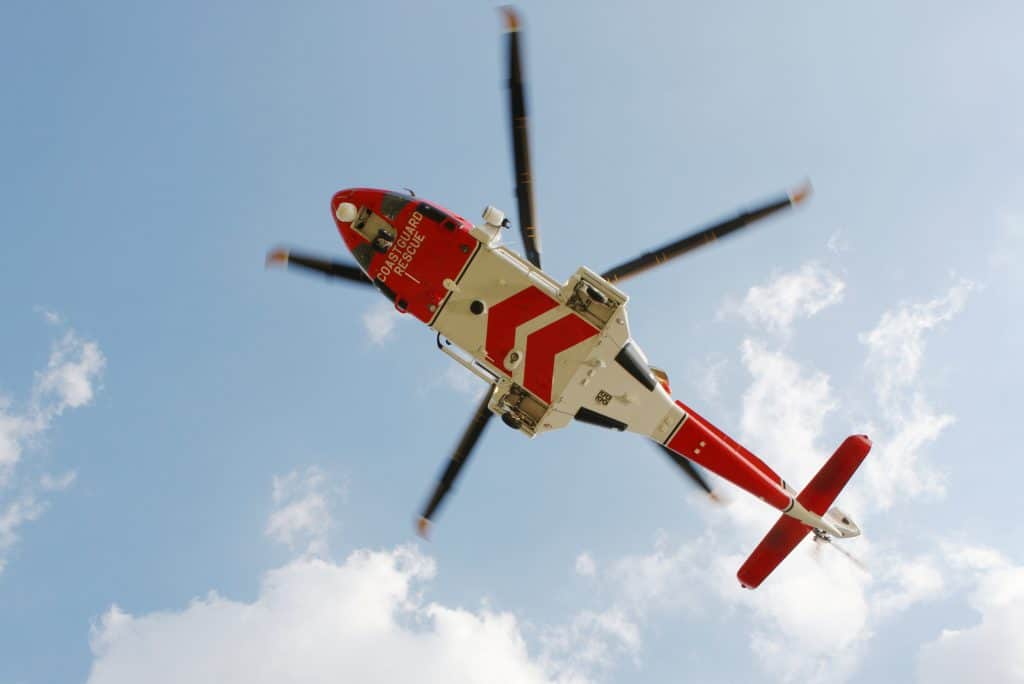Continuing our Subject Matter Expert Series, we sat down with Jeff Sherwood, SKYTRAC’s Director of Business Development, specializing in Unmanned Aerial Systems, Special Mission flight operations, and satellite communications.
Jeff has almost 15 years of experience in the Aerospace and Defense industry and is well-equipped to discuss the fields of satcom systems, flight operations, and Unmanned Aerial Vehicles (UAVs). From Beyond Visual Line of Sight (BVLOS) capabilities for UAVs to capabilities for ISR such as video streaming, connectivity, and much more, Jeff shares his wealth of knowledge about the services needed to thrive in the aerospace and defense industry, and what excites him about the future.
What is your educational background?
I attended the University of Arkansas with a focus on international business, Arabic & Middle East studies, and political science.
My first experience working in aviation was as an Airfield Operations Supervisor in Arkansas, where I managed a fixed-based operation (FBO) and VIP charter service. After this, I was Business Development Manager with Blue Sky Network, providing Iridium satellite-based communication and tracking services to aviation, land, and maritime operations worldwide. In November 2020, I joined SKYTRAC as a Director of Business Development, specializing in unmanned systems and government special missions.

Can you share with me what drew you to aviation and how long you have been involved in this industry?
I’ve always had a passion for aerospace, which grew significantly during my university years when I worked in airfield operations at a fixed-base operator (FBO) and VIP charter services company.
This passion led me to spend countless hours over many years studying all aspects of the aerospace and defense industry to further my knowledge and skill set.
These past career experiences and my educational background in international business, government, and military affairs helped pave the way to my current role and areas of expertise at SKYTRAC.
Overall, I’ve been involved in the aerospace & defense industry for 13 years.
What is your subject matter expertise?
With over a decade of experience in satellite communication systems, I have become well versed in providing resilient global connectivity for mission-critical flight operations.
I have spent most of my career providing these services to customers involved in special mission flight operations such as government agencies, militaries, air medical operators, and humanitarian missions worldwide. With the rapidly growing use of unmanned systems in the aviation industry, I have also spent years developing the expertise and skillset required to equip these UAVs with similar connectivity solutions to benefit their flight operations.

What excites you about this sphere of aviation?
The aerospace industry has always been at the forefront of new technologies that reshape society and how people are connected worldwide. The ability for airplanes to fly between continents fundamentally changed the world and paved the way for the globalization that we see today. With the rapid growth of UAVs in recent years, we now see the world changing again.
Being able to efficiently deliver cargo from a UAV to anywhere in the world will reduce the costs, safety risks, and logistical inefficiencies typically associated with other types of air cargo.
For special mission operations, the ability to provide long-range aerial surveillance at a moment’s notice from a UAV that can fit in a backpack is unprecedented.
These kinds of industry advancements will positively impact society in numerous ways, and I am excited that SKYTRAC is at the forefront of enabling these technologies.
What is the UAV industry’s value to other industries, people, and society?
The UAV industry has introduced an innovative way to fly aircraft for a variety of purposes serving industries and people worldwide.
Cargo drones can be used to deliver everyday packages and emergency medical supplies or help fight fires in remote locations. Wingcopter, for example, has designed a cargo delivery drone that helps deliver critical medical supplies to 18 remote villages on the island of Vanuatu. These delivery flights take less than 15 minutes which is a drastic improvement over the several hours or even days previously required to traverse the mountainous dense jungle on the island.
Surveillance drones can be a critical tool in providing an airborne vantage point for law enforcement, emergency response, search and rescue, and military operations. Since drones are often quicker to launch and safer to operate than manned aircraft, these systems can be first-on-scene to provide critical information to other first responders and personnel responding to a situation. For example, several SKYTRAC customers have begun to incorporate unmanned systems into their flight operations to supplement their manned aircraft. These UAVs don’t replace their manned aircraft but rather serve as a cheaper, safer, and quicker-to-deploy alternative for certain situations.
What challenges is this segment confronted with today or has been in the past?
Today’s biggest challenge is the careful balance between embracing new technologies and navigating aviation’s strict regulatory environment to introduce these new technologies.
For example, the technology to fly drones beyond line of sight (BVLOS) exists today, but the regulatory environment has not progressed quickly enough for operators to utilize these new capabilities. This slow regulation process hinders the adoption of this technology despite the positive impact innovations like these can have within the aviation industry.
How does SKYTRAC help tackle those challenges?
Our ability to quickly develop and certify avionics allows us to help operators meet regulatory requirements as they arise. As a Transport Canada DAO (Design Approval Organization) and Iridium Certus VAM (Value Added Manufacturer), SKYTRAC has developed new satcom avionics that introduce cutting-edge capabilities while maintaining the crucial quality and design standards suitable for installation on manned and unmanned aircraft.
These new systems are regularly tested and significantly improve the safety, capabilities, and operational efficiencies of various flight operations worldwide. This ensures operators that the technology installed on their aircraft is reliable and certified by leading regulatory authorities.

What capabilities are in demand in this segment?
Beyond Visual Line of Sight (BVLOS) connectivity is an in-demand capability for a variety of airborne applications.
Coast guard helicopters, for example, may be flying search and rescue missions offshore and need to send video footage of a distressed vessel to other operational assets nearby to help coordinate an emergency response.
Military helicopters need secure and encrypted voice and data communications between their air, land, and sea assets, regardless of their operating region, distances between assets, or weather environment. BVLOS connectivity provides this capability.
In a similar sense, UAVs require a reliable, global satellite communication link to fly beyond line of sight (BVLOS), which opens the door to new business opportunities.
How do you keep connected on this segment's latest trends and regulations?
My passion for aerospace is 24/7/365. I’m constantly reading news and books, researching various technologies and topics, and involving myself in industry events.
What future trends do you see that will impact the UAV industry?
The technologies and regulations facilitating Beyond Visual Line of Sight (BVLOS) flight operations will transform and exponentially grow the UAV industry.
It will create endless business opportunities, reduce (but not eliminate!) the reliance on manned aircraft in certain scenarios, and provide invaluable new capabilities that will directly benefit society.
Get in Touch
Speak with a connectivity expert today. We are eager to discuss your business needs.

